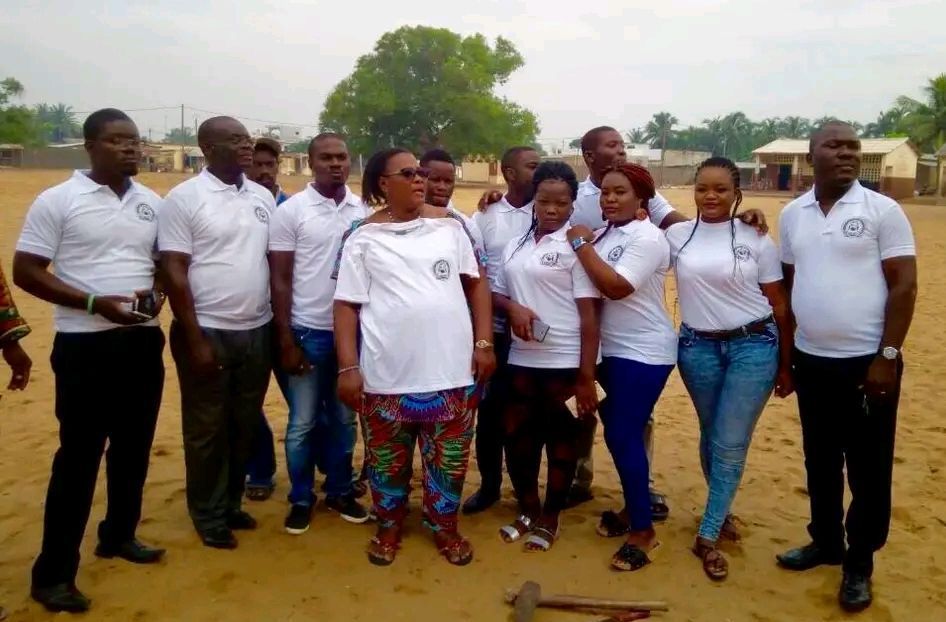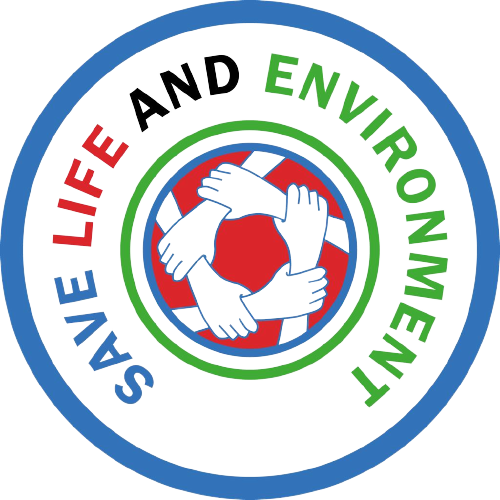We Are a Group of Caring Individuals
As compassionate individuals based in the United States and Togo, we are deeply concerned with the well-being and preservation of the environment in Togo, Africa. Our conviction is that every human being is entitled to equal opportunities. Still, unfortunately, the current economic, environmental, and political circumstances have resulted in disparities that place a significant portion of the population at a disadvantage. As a result, many Togoleses, particularly children, will never have a chance in life. In light of this, we are dedicated to leveraging our resources and knowledge to help level the playing field and provide the people of Togo with the chance to thrive and lead fulfilling lives.

STATUS & RULES OF PROCEDURES
Togolese youth, like any other youth, has a duty to participate directly or indirectly in the development of their living environment. Nowadays, the issue of sustainable development is acute and the search for solutions must be the first and main activity of the political and administrative authorities of our country. Thus, anxious to contribute to the construction of their city and:
- Considering Law 06-98 on decentralization in Togo.
- Aware of the level of development of our country.
- Aware that a well-organized civil society constitutes a favorable framework for the development program.
- Aware that today no development is possible without effective social coherence.
- Be willing to work tirelessly in all development actions of our country.
We, initiators and all those who will adhere to it, have decided to create a non-profit framework for consultation and reflection in accordance with Law No. 40-484 of July 1 , 1901 and adopt these statutes, the content of which follows:
TITLE 1: NAME-HEAD OFFICE-DURATION
Article 1: Name
An association of young leaders called “Sauvons vie et environnement” is created.
Article 2: Headquarters
Its head office is fixed at Agoè Sorad but can be transferred to any other environment by decision of the General Assembly.
Article 3: Duration
The association is created for an unlimited life.
TITLE II: GOAL-OBJECTIVES-MEANS OF ACTION
Article 4: Purpose
The association aims at social and environmental welfare.
Article 5: Objectives
To achieve its goals, it sets itself the following essential objectives:
- Promote exchanges of experience between development actors and the vulnerable population.
- Promote social cohesion.
- Develop platforms for development actions.
- Bring its expertise in all its forms to the population.
- Identify the problems of the community to make development projects.
- Support any other development project.
Article 6: Means of action
To achieve its objectives, the association proposes to implement the following means of action:
- Create a project study and design framework.
- Create within it cells of health, culture, literature, environment, education and economy.
- Create a representation cell in each region to collect information.
- Support and promote entrepreneurship.
- Support the education and training of young people.
- Establish partnerships with institutions of higher and university education to organize conferences, seminars, symposiums, round tables, days of reflection, training workshops relating to development issues and social cohesion.
- Seek sources of funding for the projects that will be developed.
TITLE III: MEMBER-MEMBERSHIP AND LOSS OF MEMBERSHIP
Article 7: Member
Can be a member of the association any student or young citizen of good will and good faith.
The association is made up of founding, active, sympathizing and honorary members:
- Founding Member - Is a founding member any person who was present at the creation of the said association or any person who took part in the constitutive General Assembly and whose name appears in the minutes.
- Active Member - An active member is any natural person who has accepted:
- To offer its skills and resources to support the actions of the association.
- Adhere to these statutes and internal regulations.
- To participate fully in the bodies and activities of the association.
- To be eligible within the authorities and to carry out the tasks responsibly.
- Keep the secret of the group for the smooth running of the activities.
A sympathizer is any natural or legal person sharing the same ideals as the association, who without being a member undertakes to support it.
Article 8: Mode of membership
Any natural person motivated by good will for the sustainable development of our country can join the association.
Article 9: Loss of membership
Membership may be lost in the event of:
- Resignation
- Exclusion
- Death
- Dissolution of the structure
Clause 10:
Any resigning member must inform the Board of Directors by reasoned letter.
Clause 11:
In the event of misconduct deemed serious, any member of the association may be excluded.
The final exclusion is pronounced by the General Assembly by a majority of 2/3 of the members present on the proposal of the Board of Directors. The person concerned must be able to respond, beforehand, to the charges brought against him before the said Assembly.
Clause 12:
Any member who resigns or is expelled cannot claim reimbursement of his membership fees or of his contributions which contribute to the survival of the association. On the other hand, he must pay any debts he may have contracted with the latter.
Section 13:
In the event of the death of a member in good standing with the association, the Assembly meets and decides on the proposal of the Board of Directors on the support to be given to the bereaved family.
TITLE V: ORGANIZATION-OPERATION
Article 14: Organs
The association's organs are:
- The General Assembly (GA)
- The Executive Board (BE)
- The statutory auditor (CC)
- The Council of Cell Presidents (CPC)
Article 15: General Assembly
The General Assembly is the supreme body of the association. It is made up of all members. There are two types of General Assembly: the Ordinary General Assembly (AGO) and the Extraordinary General Assembly (AGE).
The OGM must be convened annually by the Chairman of the Board of Directors (PCA) within six months of the filing of the annual activity report. She is competent:
- To define the orientation grades of the association;
- To elect the members of the Board of Directors;
- To vote the budget and approve the activity program of the association;
- To vote the contribution rate;
- To modify the statutes and the rules of procedure
- To exclude any member who has committed a fault deemed serious
The EGM can be convened by the PCA or if 2/3 of the members make a written request. It is competent for:
- Making an important, pressing decision concerning the GA
- Inform about the progress of the activities of the association;
- Liquidate the assets of the association;
- Merge association with another structure;
- Dissolution of the association
- Revoke the CC or a member of the CA
During the EGM, the only subjects that can be discussed are those mentioned in the notice of meeting.
Article 16: Decision-making - Quorum
The GA can only validly deliberate if the majority of its members are present. Absolute decisions are obtained by a show of hands or by secret ballot or by acclamation. A quorum of 50% plus one member is required. If the quorum is not reached, the GA is adjourned and another meeting is convened with the same agenda within fifteen (15) days and can validly deliberate regardless of the number of members present.
Article 17: The Board of Directors
The Board oversees the proper functioning, the good management of the association and the application of the rules of procedure and the statutes. He is elected by the GA for a term of two (2) years renewable only once. It meets once a month in session it defines the association's resource management policy.
- Sees to the application of the decisions of the GA and settles all the conflicts which will be born in the association
- He receives and studies membership applications and letters of resignation from members
- It submits to the GA a program of activities and an ordinary annual budget or to any member in extraordinary session when circumstances so require.
The CA is composed of ten (8) members below:
- A Chairman of the Board of Directors (the PCA)
- A Vice President (VP)
- A General Secretary, in charge of the program
- An information and organization officer
- A person in charge of the women's department
- A general accountant treasurer
- A resource and heritage officer
- Two advisors
The CA can only validly deliberate if 2/3 of its members are present. The decisions are taken on a majority basis. The CA may, to deal with certain specific problems, be assisted by any resource person depending on their skills and availability. These people have an advisory and non-deliberative voice.
Article 18: Method of electing Board members
Board members are elected by the GA by simple majority list system. In the event of a tie vote, a second ballot is held.
Section 19:
- THE CHAIRMAN OF THE BOARD OF DIRECTORS
He is the first person in charge of the association. He sees to the execution of the decisions and resolutions of the GA, to the good functioning and the good management of the association. He convenes and chairs the meetings of the CA and the AG for which he ensures order and the police. He informs all the development bodies of the association's activities and all correspondence files. He represents the association in carrying out acts of civil life and before the courts. He is assisted by the Vice-President.
- THE VICE PRESIDENT
He works closely with the President. In case of impediment of the latter, he has the competence to carry out all the acts relating to the priorities of the association and defends the interests of this one.
- THE SECRETARY GENERAL
He takes care of correspondence and administrative matters. He prepares, in agreement with the Chairman and the Vice-Chairman, the agenda for meetings and sessions. He writes the minutes in collaboration with the information officer. He is the custodian of the archives. It establishes the general program of activities of the association.
- THE DEPUTY SECRETARY GENERAL
He works in collaboration with the Secretary General, replaces him in the event of duly noted impediment and the person in charge of the treasury.
- THE INFORMATION OFFICER AND THE ORGANIZATION
He ensures the association's communication and participates with the President in media broadcasts. It organizes the framework of meetings, seminars, seminars, conferences, round tables, days of reflection, and training workshops. He informs the members of the holding of the GA.
- THE GENERAL TREASURER
He defends the financial interests of the network, manages the treasury and is responsible for presenting, in collaboration with the Deputy Secretary, financial reports to the General Assembly.
- HEAD OF RESOURCES AND HERITAGE
He keeps all the goods and resources of the association and makes them available at the appropriate time.
- HEAD OF THE WOMEN'S DEPARTMENT
It defends the interests of young girls and takes care of the resources to be made available to the said department.
- THE ADVISERS
The advisers, on the basis of their experience, assist the other members of the Board in their functions. However, the President may entrust them with specific tasks.
Article 20: Council of Cell Presidents
The GA elects for a mandate of two (2) years renewable only once, the presidents of cells that make up the association. They plan the activities in the Cells, draw up mini-budgets and programs which they send to the Secretary General.
Article 21: the Statutory Auditor
The GA elects for a mandate of one (1) year renewable only once, an auditor in charge of periodically checking the accounts and the management of the treasury. It operates unexpectedly and reports to the general meeting on any inaccuracies noted in the management. He checks the books, cash, portfolios and resources of the association, checks the regularity and sincerity of the inventories and balance sheet as well as the financial situation.
TITLE VI: FINANCIAL PROVISIONS
Article 22: resources
The resources of the association consist mainly of
- contributions,
- subsidies, bequests and voluntary subscriptions,
- income from the activities of various organizations by the association.
Article 23: Financial transactions
The funds of the association are deposited in a bank account opened in the name of the said association. Any withdrawal of funds requires the joint signature of the Chairman of the Board and the Treasurer General. However, the only signature of the P.CA can pass.
Article 24: the cash register
A minimum fund provided for by the rules of procedure must be available in cash for current expenses.
Article 25: Allocation of resources
The resources of the association are used solely for the settlement of the operating costs of its bodies and those relating to the performance of activities.
TITLE VII: FINAL PROVISIONS
Article 26: Modification
The provisions of these statutes can only be modified in the General Assembly by a majority of 2/3 of its members present on the proposals of the CA or at the request of at least 2/3 of the members.
Article 27: Dissolution and destination of resources
The association can only be dissolved by the GA with a majority of at least 2/3 of the members. In the event of dissolution, the Board of Directors calls on an auditing firm for the inventory of all the association's assets. After clearing the liabilities, the net assets are entrusted to bodies pursuing the same objectives.
Section 28:
All provisions not provided for in this statute will be specified in the rules of procedure
Section 29:
This statute enters into force as soon as it is adopted by the General Assembly.
DONE in Agoè, on March 25, 2017
THE CONSTITUTIVE GENERAL ASSEMBLY

